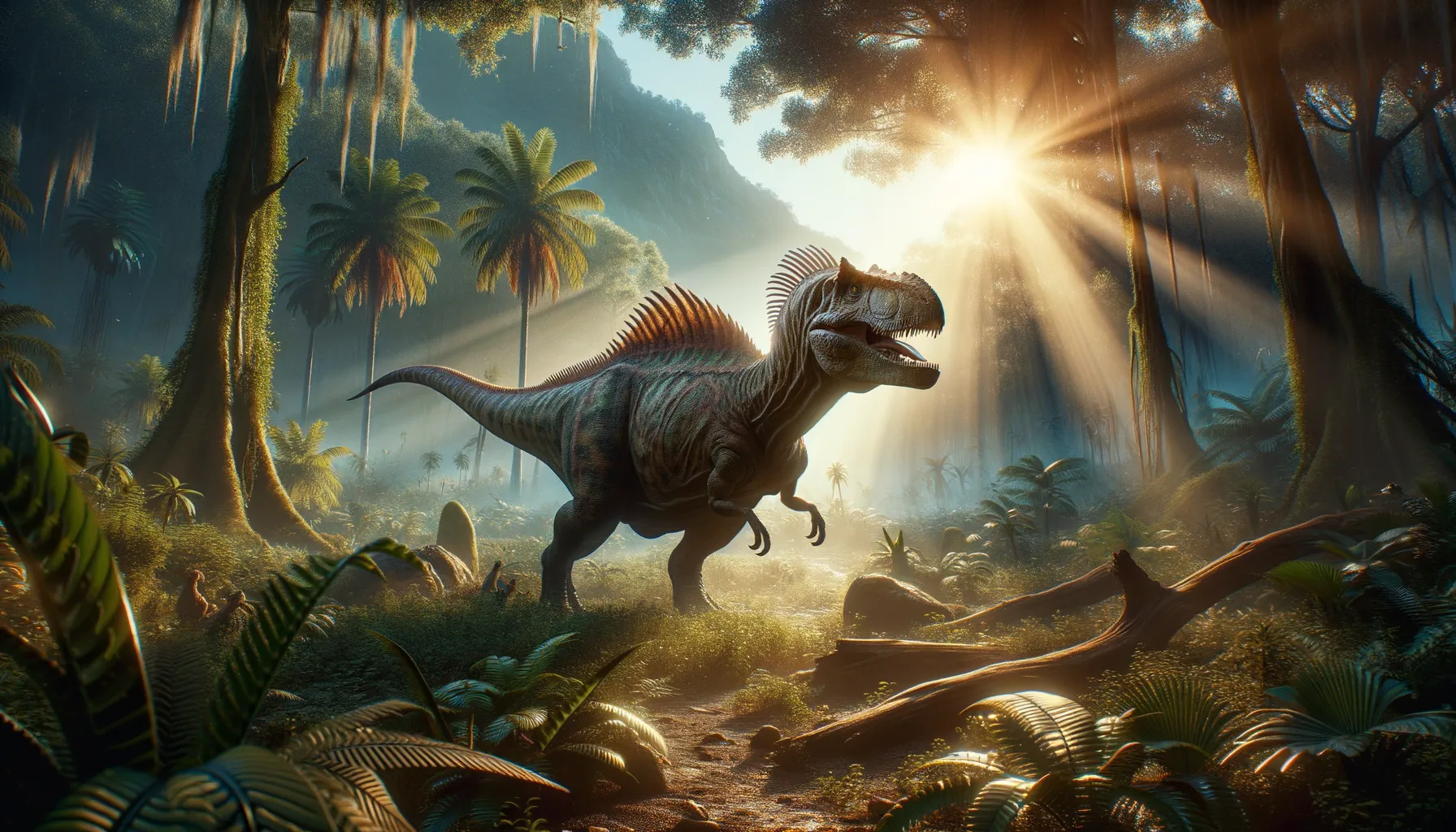
Amargastegos
A fortress on legs from prehistory.
Period
Cretaceous
Length
Estimated at 6 meters long.
Height
Around 2 meters tall.
Weight
Approximately 2 tons.
Amargastegos was a medium-sized armored herbivore from the Cretaceous period, known for its distinctive spikes along its back. This dinosaur's robust body was well-suited to life in lush forests where it browsed for vegetation. Its discovery added valuable insight into the diversity of armored dinosaurs in South America.
Diet
Amargastegos was a herbivore, feeding on low-lying plants and shrubs. It likely used its beak-like mouth to strip leaves and small branches.
Hunting
Amargastegos did not hunt as it was herbivorous. It foraged for food in groups, likely moving through dense foliage to find choice vegetation.
Environmental challenges
The primary environmental challenges it faced included dealing with large predators like carnivorous dinosaurs. Another challenge was probably the competition for food with other large herbivores. Changes in climate could also have affected the availability of its preferred foods.
Speed
Likely slow-moving due to its heavy armor.
Lifespan
Estimated to live several decades.
First discovery
First discovered in Argentina in the early 2000s.
Fun Facts
- Amargastegos was a dinosaur that roamed the earth during the Early Cretaceous period, about 130 million years ago.
- It belonged to the group known as stegosaurids, famous for their distinctive back plates and tail spikes.
- The name Amargastegos means 'Amarga's roof' or 'Amarga's plate', with 'Amarga' referring to the site in Argentina where its fossils were found.
- Amargastegos is estimated to have been around 6 meters (20 feet) long, making it a medium-sized herbivore.
- It likely used its tail spikes, also known as 'thagomizers', for defense against predators.
- Amargastegos lived in what is now South America, which was part of the southern supercontinent Gondwana.
- As a plant-eater, its diet would have consisted of low-lying vegetation, which it could easily graze with its beak-like mouth.
Growth and Development
Young Amargastegos may have been vulnerable to predators until its armor fully developed. Growth would involve gradually developing stronger, heavier body armor and spikes for protection. It likely reached maturity after several years, at which point its full defensive structures would have been developed.
Habitat
Amargastegos likely lived in forested environments with plenty of plant life. Its habitat would have provided ample cover and food resources. Seasonal flooding or drought could have affected its habitat and food supply.
Interaction with other species
Amargastegos interacted with other species primarily through competition for resources. It shared its environment with other herbivores and had to navigate around territorial carnivores. Social groups may have helped protect its members from predatory threats.
Natural lifespan
Amargastegos could live up to several decades naturally.
Reproduction
Amargastegos likely reproduced by laying eggs in nests. Nesting sites would have been carefully selected to ensure survival against predators. Both parents might have played a role in protecting the nests and young.
Social behaviour
Amargastegos was potentially social, living and foraging in herds for mutual protection. This group behavior would have provided security against predators and increased the chances of survival for the young.
Fossil locations
Fossils have been mostly found in Argentina, providing insights into its habits and environment. These locations suggest it lived in diverse ecosystems. Fossil evidence has primarily focused on its distinctive armor and skeletal structure.
